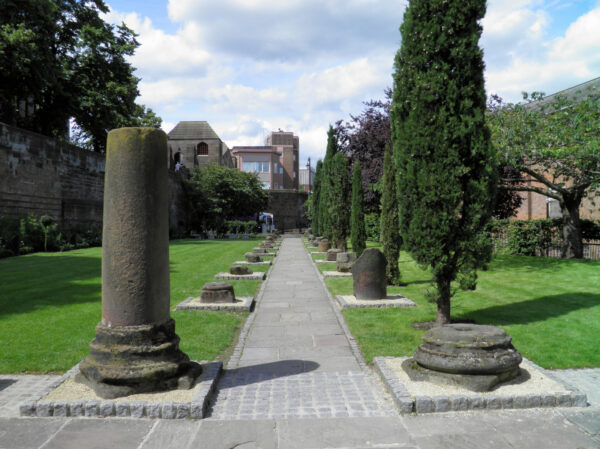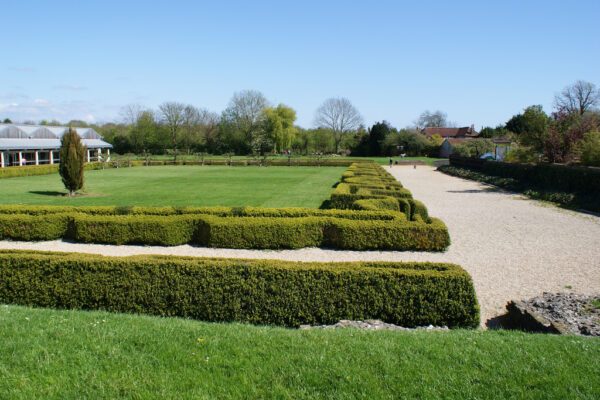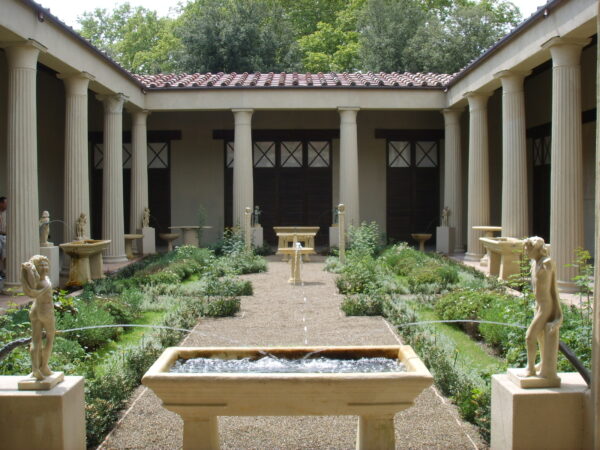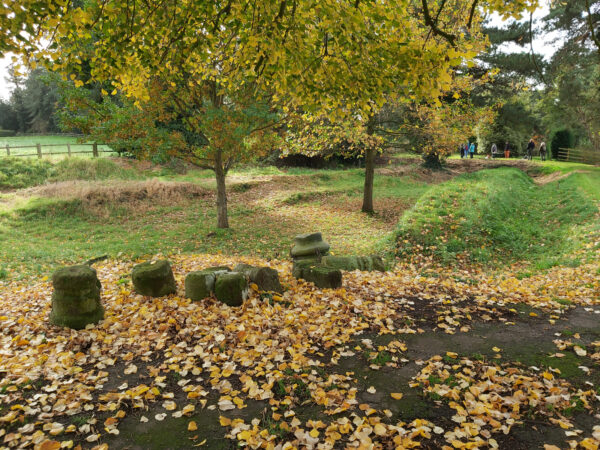
Much like many of our modern gardens, Roman gardens were also designed to be a place of relaxation, that encouraged wildlife, as well as providing food, herbs, and medicine.
Private gardens were popular with the Romans producing fruit, vegetables and herbs plus, on occasion, honey and wine. A wide range of plants were also available to the Romans, and Pliny the Elder lists 70 cultivated for food or cooking, 39 used for making wines or cordials and 16 grown to encourage bees. In addition, he mentions 101 items with medicinal properties such as lettuce to help with sleep.
Pliny also wrote how his work had been ‘aided by Antonius Castor, who in our time enjoyed the highest reputation for an intimate acquaintance with this branch of knowledge. I had the opportunity of visiting his garden, in which, though he had passed his hundredth year, he cultivated vast numbers of plants with the greatest care. Though he had reached this great age, he had never experienced any bodily ailment, and neither his memory nor his natural vigour had been the least impaired by the lapse of time‘.

There is obviously an overlap between the different purposes of plants (and plant-related products) with some, such as bay laurel or honey, having both culinary and medical uses. However, aside from providing medicinal plants and herbs, Roman gardens probably had a much broader health role in encouraging movement and enabling access to ‘pure air’ (incorporating elements such as air movement, natural sounds, aromas, sunlight and vistas) in addition to enhancing psychological wellbeing. All these elements are still relevant today.
Significant physical work is involved in establishing and maintaining a Roman garden and, in his list of exercises, the Roman physician Galen specifically advocated ‘digging, bearing burdens, pruning vines and reaping‘. But it is also clear that Roman gardens were designed to encourage movement both around the perimeter and in between the individual beds. Pliny the Younger describes tree-lined pathways and avenues edged by box hedges at his villa in Tuscany. Garden paths have also been identified archeologically from a number of villa sites including Frocester Court in Gloucestershire . The Roman architect Vitruvius even provided details on the construction of sand-covered walkways or ambulationes incorporating drains and a charcoal base to ensure the surface remained dry. Pergolas were often included in Roman gardens to provide shaded walkways.

In relation to wholesome ‘pure air’ Pliny the Younger emphasised the views, breezes and smells at his garden villas, including commenting on a ‘terrace scented with violets‘. Other aromatic plants that would have been found in Roman gardens include camomile, lavender, rosemary and roses.
Enabling psychological wellbeing and developing tranquillity were an important focus for the Roman Emperor Marcus Aurelius and his physician Galen during the course of their Antonine Plague. Today, as we continue to cope with the after-effects of COVID-19, it is worth bearing in mind that there is good evidence for the positive effects of any gardening in reducing anxiety, depression, stress and rumination (brooding) in addition to enhancing self-esteem. There are also the associated mental health benefits of being exposed to natural light.

Gardening is about being in contact with nature and, as well as the flora, the Romans encouraged birds into their gardens as evidenced by bird baths and feeders. Fishponds and, occasionally, aviaries have been identified at a several sites and some Roman gardens were adorned with fresco paintings showing greenery, flowers, birds and blue sky. Again, there is a wealth of modern research evidence for the benefits of natural settings in their own right for enhancing psychological wellbeing.
The coronavirus pandemic has demonstrated the significant adverse impacts on many people’s mental health as a result of social isolation and I am sure this must have been the case for some of our predecessors too during the time of their plague. Today gardens and gardening are an excellent way to connect with others in a safe space outdoors, especially if it is combined with some immersion in the past. Roman gardens are being reconstructed at various sites including Aldborough, Chester, Fishbourne, Pompeii and many more – well worth a trip!
Figure 1: The Roman Garden in Chester. ©Carole Raddato, CC BY-SA 2.0 https://creativecommons.org, via Wikimedia Commons
Figure 2: The Roman Garden at Fishbourne. ©David Spender, CC BY 2.0 https://creativecommons.org, via Wikimedia Commons
Figure 3: A Roman Garden in Pompeii: ©I Sailko, CC BY-SA 3.0 http://creativecommons.org, via Wikimedia Commons
Figure 4: The Roman Garden being developed at Aldborough ©Nick Summerton

This is my first time pay a quick visit at here and i am really happy to read everthing at one place